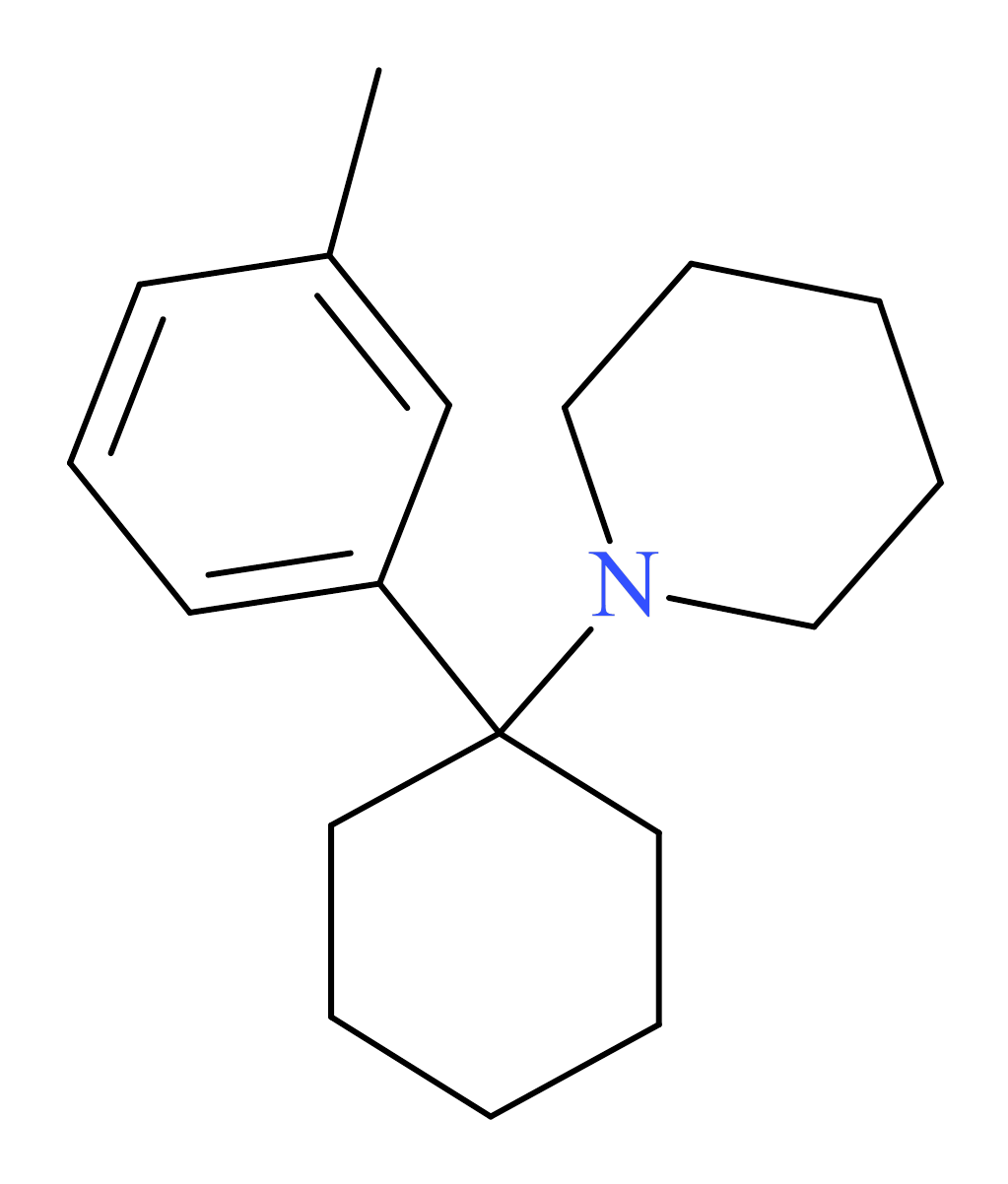3-Methyl-PCP
The following information was compiled in August 2024 and is subject to change as new research is conducted and as new information becomes available:
Description: 3-Methyl-PCP is a novel synthetic hallucinogen with structural similarity to other arylcyclohexylamines (e.g., ketamine, PCP). 3-Methyl PCP was synthesized in the 1960’s along with other arylcyclohexylamines for the evaluation of their efficacy as central nervous system depressants.1 3-Methyl-PCP was first identified in the United States in February 2024 by our laboratory and confirmed in April 2024 after acquiring standard reference material.
Sample Source: Lehigh Valley Health Network (Allentown, PA)
Sample Appearance: White powder
Pharmacology: The activity and potency of 3-methyl-PCP is unknown; however, based on the structural similarity to 3-MeO-PCE and 3-HO-PCP, 3-methyl-PCP is assumed to have high affinity for the N-methyl-D-aspartate receptor and inhibit reuptake of norepinephrine and dopamine, causing dissociative effects.2
Toxicology: 3-Methyl-PCP has been identified in one toxicology case to date at the CFSRE.
Drug Materials: 3-Methyl-PCP has been detected in one drug material to date at the CFSRE.
Demographics / Geographics: Toxicology cases and drug materials originated from Pennsylvania. 3-Methyl-PCP was detected alongside other hallucinogens (e.g., 2F-2oxo-PCE and deoxymethoxetamine).
Legal Status: 3-Methyl-PCP is not currently scheduled in the United States.
- Class:
- Hallucinogen
- Appearance:
- White powder
- Formula:
- C18H27N
- MW:
- 257.4
- [M+]:
- 257
- [M+H]+:
- 258.2216
- IUPAC:
- 1-[1-(m-tolyl)cyclohexyl]piperidine
- Report Date:
- August 22, 2024









